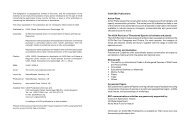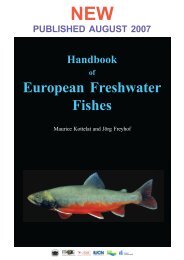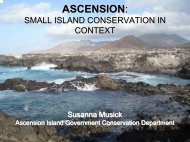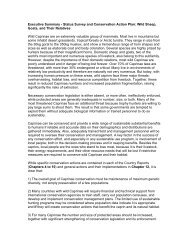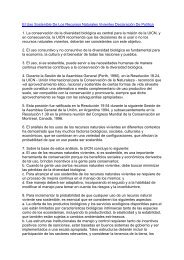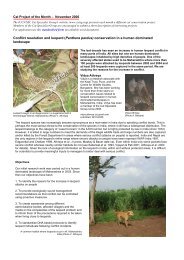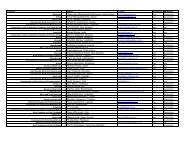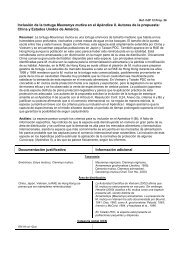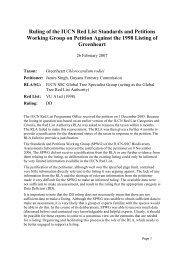Planning education to care for the earth - IUCN Knowledge Network
Planning education to care for the earth - IUCN Knowledge Network
Planning education to care for the earth - IUCN Knowledge Network
Create successful ePaper yourself
Turn your PDF publications into a flip-book with our unique Google optimized e-Paper software.
Basis <strong>for</strong> EE in <strong>the</strong> Sahelinstitutions which exist, as well as <strong>the</strong> strategies of alliance <strong>the</strong> peopledevelop with regard <strong>to</strong> projects.Educational process and proceduresThe proposed environmental <strong>education</strong> process must be as close aspossible <strong>to</strong> <strong>the</strong> <strong>education</strong>al processes and procedures developed in <strong>the</strong>course of ages <strong>for</strong> <strong>the</strong> transfer of knowledge. Existing systems can serveas springboards <strong>to</strong> ensure that as many people as possible are involved.If <strong>education</strong>al processes and procedures <strong>for</strong>eign <strong>to</strong> <strong>the</strong> group are <strong>to</strong> be used,which may be a kind of opening and enrichment <strong>for</strong> its members, it isnecessary <strong>to</strong> measure <strong>the</strong>ir difference with regard <strong>to</strong> local practice; readapt<strong>the</strong>m <strong>to</strong> this context; motivate <strong>the</strong> ac<strong>to</strong>rs by raising <strong>the</strong>ir awareness of <strong>the</strong><strong>education</strong>al innovation proposed <strong>to</strong> <strong>the</strong>m, and make sure that <strong>the</strong>se do notmake <strong>the</strong> people look more limited intellectually than <strong>the</strong>y are.In short if environmental <strong>education</strong> is <strong>to</strong> change behaviour, it must firstacquire a relatively extensive knowledge of existing attitudes andpractices. This will entail identifying all positive fac<strong>to</strong>rs that could be aspringboard <strong>for</strong> environmental <strong>education</strong> by streng<strong>the</strong>ning positiveattitudes and behaviour or as bases of improving <strong>the</strong> process andoptimizing expected results.ConstraintsConstraints are internal and external <strong>to</strong> <strong>the</strong> group.Internal constraintsAmong internal constraints, <strong>the</strong>re are cultural, social, political andeconomic fac<strong>to</strong>rs which directly or indirectly degrade <strong>the</strong> environment.These must be identified <strong>to</strong> guide <strong>the</strong> content of environmental <strong>education</strong><strong>to</strong>ward <strong>the</strong> most effective approach <strong>to</strong> modify behaviour.It may be that <strong>the</strong> environmental context has changed and that practiceswhich previously were appropriate have become damaging, <strong>for</strong> example,burning practices that as, a whole, are now ill adapted <strong>to</strong> <strong>the</strong> Sahel’spresent environment.In <strong>the</strong> same way population growth and settlement lead <strong>to</strong> overexploitation of land, rendering ecosystems precarious, and shortening <strong>the</strong>fallow periods needed <strong>for</strong> natural regeneration.Ano<strong>the</strong>r pressure on <strong>the</strong> environment is felling trees <strong>for</strong> firewood. Energyneeds are still high despite <strong>the</strong> ef<strong>for</strong>ts <strong>to</strong> introduce appropriatetechnologies such as improved s<strong>to</strong>ves. These have been ra<strong>the</strong>r widelyspread in <strong>the</strong> region, although with mixed success.23



